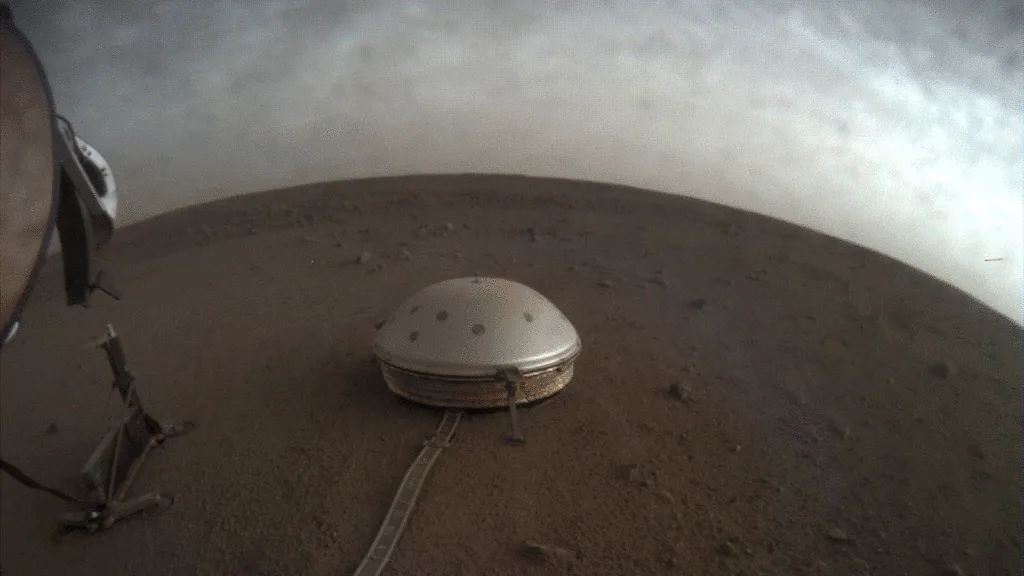
NASA InSight detects thousands of 'invisible dust devils' on Mars
Mars is famous for its dust devils, but something strange is going on around InSight
NASA's InSight lander has been quietly collecting data and pictures from the surface of Mars for well over a year now. Scientists with the mission have just reported something extraordinary - invisible dust devils!
Dust devils are common on Mars. Nearly every Mars mission with a camera - rover, lander, or satellite - has spotted at least one of these dust devils, or the effects of one, at some time. Mars scientists know plenty about them, and they've even identified summer as being 'dust devil season'.
InSight - the Interior Exploration using Seismic Investigations, Geodesy and Heat Transport mission - touched down on Mars in November of 2018. It immediately began taking pictures with its two cameras, and by now, it has snapped over 4,000 images. It eventually started recording the local weather, too, as well as any seismic vibrations that pass through the region (including those generated by its own operations).
Scientists working with the mission published several research papers this week, using data sent back from InSight's instruments. In one of these papers, a research team led by Cornell planetary scientist Don Banfield reported something very curious.
Data collected by InSight's weather station and seismometer show conclusive evidence that thousands of dust devils (aka 'convective vortices') have swirled by the lander so far. Satellite data has even confirmed this, by spotting the trails left behind by these whirlwinds as they swept along the dusty ground.
"InSight is the most active site for convective vortices visited thus far by a spacecraft carrying a pressure sensor," the team pointed out in their paper.
Despite what InSight's instruments are reporting and what the satellites have revealed, there is one curious fact. Not one single image taken by the lander's cameras that any evidence of these whirlwinds!
Apparently, they're invisible!
"We have seen the pressure signature of thousands of dust devils, and we have tried to take images at the right times of day," Banfield said in a Cornell press release. "We've caught absolutely no dust devils on camera."
"Other landers have more effortlessly imaged dust devils, so it's surprising that we haven’t even captured an image of one," he added.
RELATED: NASA INSIGHT IS SENDING BACK DAILY WEATHER RECORDS FROM MARS
IT'S ALL ABOUT THE DUST
InSight snaps several images every day. To capture dust devils, the science team has the lander take several pictures at the perfect time of day - between 10 a.m. and 3 p.m., local time.
One of the significant 'dust devil' events recorded by InSight was on February 1, 2019, the 65th Sol of the mission. On that day, the lander recorded a spike in power - about a 0.7% rise from one panel and 2.7% from the other. From all indications, this indicated that a whirlwind had passed over the lander, cleaning some dust off its solar panels in the process.
Even so, InSight's cameras did not pick up anything unusual during the event. It was only the weather and seismic data, and the power spike, that indicated that a 'cleaning event' took place.
The key to seeing a dust devil, though, is the dust.
Convective vortices happen all the time here on Earth. In the video below, the only way we see this particular vortex is due to the hay lofted by the circulating winds.
If the loose hay wasn't there, we might feel the presence of the vortex, but we wouldn't see it at all.
The same thing is happening around InSight. Sunlight is warming the ground in the lander's vicinity, causing heated air to rise quickly and cold air around to sink, forming convective circulations. Winds blowing through the area tip these circulations vertical, resulting in a rotating vortex similar to a tornado (but much weaker, due to Mars' much thinner atmosphere).
The whirlwind becomes visible if it picks up dust from the ground and carries that dust in the circulation for some time.
If there was no dust in the region of InSight, we would have the explanation, but that's not the case.
"You can certainly have a vortex go by and it doesn't kick up any dust, but it's a dusty place [where] we landed," Banfield told CBC News.
So, now mission scientists are left with a mystery. The two primary components of dust devils are present around InSight in abundance - thousands of convective vortices and plenty of dust.
What they need to figure out now is why these components aren't coming together to produce visible dust devils, like they seem to do pretty much everywhere else they've looked with robotic cameras.
"I think it suggests to us that we don't understand dust-lifting on Mars," Banfield told CBC News.
Sources: NASA | Cornell University | CBC











